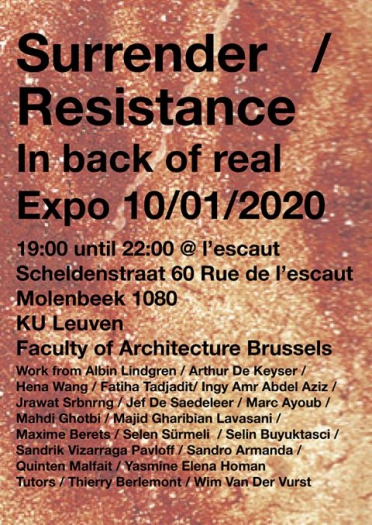For the fourth time, the KULEUVEN_Faculty of Architecture_MA-studio14 SURRENDER-RESISTANCE, will take up
residency at l’ESCAUT (L’ESCAUT/LASCAUX). This year, the theme that is both basis and starting point, is the title of a poem by Allen Ginsberg, “In back of Real” (Ginsberg 1956, p.44).
The Lascaux story provokes puzzlement about the concept of the real, which is also at the centre of the question mentioned at the beginning: “how do you have a civil society if you can’t agree on what factual reality is?”
(https://www.youtube.com/watch?v=GOHH4JI4_9U, accessed on 11 september 2019).
Can we see and frame the position of architecture herein, as an ethnic domain, as a seller of dreams, as an enforcer,
a confronter, or …? The engagement with these issues, starts with the detection of critical points of acceleration,
deceleration, evolution or transformation – just inside or just outside the perimeter of architecture – and strives to
finalise with a public articulation, presentation (exhibition) of the outcome. The underlying red thread through this all,
is the twin-concept Surrender/Resistance, and its inherent and inescapable ambivalence.Surrender/Resistance is part of the Master-Engagement ‘Mediating Tactics’, that critically questions the discipline and practice of architecture, and reflects on the role of the architect in contemporary society. This studio was designed in collaboration with Marc Godts. This is its fourth edition, and it is made possible by the close collaboration with l’Escaut (www.escaut.org)
